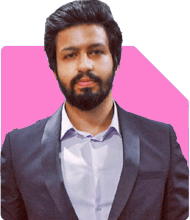Mohit Arora | Answer |Ask -Follow
Dating Coach - Answered on Jun 27, 2024

My girlfriend(20) of 3 yrs wants to focus on carrer and completely leave me but i am suggesting her that i will wait 10 to 15 years for her carrer but she still said no , but she is a very good person and i also know she will never date anyone , she only said that she will not care for me but only for carrer, what shall i do? I seriously do love her and want her to succeed but does not listen to me atleast once.
You may like to see similar questions and answers below
Ravi Mittal |676 Answers |Ask -Follow
Dating, Relationships Expert - Answered on Jun 03, 2024
Ravi Mittal |676 Answers |Ask -Follow
Dating, Relationships Expert - Answered on Aug 07, 2024
Dr Shyam Jamalabad |107 Answers |Ask -Follow
Dentist - Answered on Dec 05, 2025
Dr Shyam Jamalabad |107 Answers |Ask -Follow
Dentist - Answered on Dec 05, 2025
Dr Dipankar Dutta |1836 Answers |Ask -Follow
Tech Careers and Skill Development Expert - Answered on Dec 05, 2025
Ulhas Joshi |280 Answers |Ask -Follow
Mutual Fund Expert - Answered on Dec 05, 2025
Dr Dipankar Dutta |1836 Answers |Ask -Follow
Tech Careers and Skill Development Expert - Answered on Dec 04, 2025
Ravi Mittal |676 Answers |Ask -Follow
Dating, Relationships Expert - Answered on Dec 04, 2025
Anu Krishna |1745 Answers |Ask -Follow
Relationships Expert, Mind Coach - Answered on Dec 04, 2025
Anu Krishna |1745 Answers |Ask -Follow
Relationships Expert, Mind Coach - Answered on Dec 04, 2025
Mayank Chandel |2562 Answers |Ask -Follow
IIT-JEE, NEET-UG, SAT, CLAT, CA, CS Exam Expert - Answered on Dec 04, 2025
Mayank Chandel |2562 Answers |Ask -Follow
IIT-JEE, NEET-UG, SAT, CLAT, CA, CS Exam Expert - Answered on Dec 04, 2025
























